 There are several tasks we do when a lamb is born, after the desperate clearing of mucous from their mouth and nose if the lamb hasn't shaken it off immediately. Healthy lambs can be born perfectly easily only to die from asphyxiation from the birth sac still encasing them. Most of the time they or the ewe get it clear but we like to watch and make certain. Paper towel is brilliant for this purpose as although it's not reusable this does mean it is perfectly clean on the first use and it's so absorbent that it grips well and slides all the extra stuff away and contains it for disposal. It isn't always easy to clean little muzzles with just your hands in an emergency, in my limited experience, newborn lambs are quite slippery.
There are several tasks we do when a lamb is born, after the desperate clearing of mucous from their mouth and nose if the lamb hasn't shaken it off immediately. Healthy lambs can be born perfectly easily only to die from asphyxiation from the birth sac still encasing them. Most of the time they or the ewe get it clear but we like to watch and make certain. Paper towel is brilliant for this purpose as although it's not reusable this does mean it is perfectly clean on the first use and it's so absorbent that it grips well and slides all the extra stuff away and contains it for disposal. It isn't always easy to clean little muzzles with just your hands in an emergency, in my limited experience, newborn lambs are quite slippery.
The next step is to dip the broken umbilical cord into iodine solution to stop infection. This is easiest as soon as the lamb is breathing and upright but before he's learned to run away. Again, although there are probably specialist veterinary things on the market for this purpose (I don't really know, are there?) we've found the best thing is to pour an inch or two of iodine into a wide, shallow glass jar with a screw top lid. Although it's glass - which we generally avoid around animals - this does mean it can be sterilised and is spill proof. If it does spill you only lose that bit and not the whole bottle. Best of all for clumsy would-be vets like me it's easy to catch the dangling bloody bit in a wide jar which is helpful when it's the middle of the night and your body's working solo because your brain is still asleep.
 The last thing to be sure of before getting back into a warm bed is that the ewe's teats are clear and the lamb has had a draught of colostrum. Now vets will tell you - and they are right - that a lamb can go for about 12 hours without colostrum before it runs out of reserves and starts to get too weak. Of course, but why make them wait if you don't have to? Also, knowing this place, some disaster will occur that takes all our energy, attention and time during the next 12 hours and we can't watch the lamb constantly to be sure. If it then gets sick what do we know of it's feeding history? So we reckon it's better to see it happen as soon as possible, put a brisk tick of completion against that box and hop back under the quilt. On tame ewes, a light squeeze of the nipples is easy and unblocks the little wax seal (like a fine wine this colostrum stuff, it's been brewing for months) which lets both the colostrum and the smell of said colostrum out. After that it's generally minutes before canny lambs find the source. Sometimes dopey ones need a hint, but they all generally get the idea pretty quickly if not fussed over too much.
The last thing to be sure of before getting back into a warm bed is that the ewe's teats are clear and the lamb has had a draught of colostrum. Now vets will tell you - and they are right - that a lamb can go for about 12 hours without colostrum before it runs out of reserves and starts to get too weak. Of course, but why make them wait if you don't have to? Also, knowing this place, some disaster will occur that takes all our energy, attention and time during the next 12 hours and we can't watch the lamb constantly to be sure. If it then gets sick what do we know of it's feeding history? So we reckon it's better to see it happen as soon as possible, put a brisk tick of completion against that box and hop back under the quilt. On tame ewes, a light squeeze of the nipples is easy and unblocks the little wax seal (like a fine wine this colostrum stuff, it's been brewing for months) which lets both the colostrum and the smell of said colostrum out. After that it's generally minutes before canny lambs find the source. Sometimes dopey ones need a hint, but they all generally get the idea pretty quickly if not fussed over too much. We are aiming to breed coloured lambs this year. This chap is white. We'd prefer ewe lambs to start building up the coloured breeding flock. This chap is... well, a chap. Still, the thrill of a new lamb is enough to keep going through the nights of broken sleep and so what if he's not exactly what we wished for? He's not coloured or female but he's gorgeous and healthy so we're over the moon and just don't care.
We are aiming to breed coloured lambs this year. This chap is white. We'd prefer ewe lambs to start building up the coloured breeding flock. This chap is... well, a chap. Still, the thrill of a new lamb is enough to keep going through the nights of broken sleep and so what if he's not exactly what we wished for? He's not coloured or female but he's gorgeous and healthy so we're over the moon and just don't care.

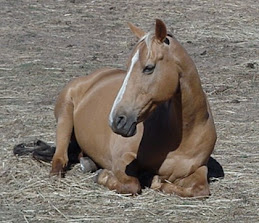
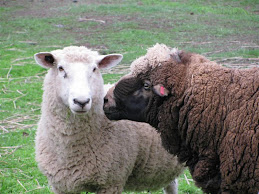.jpg)

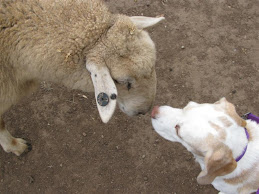.jpg)

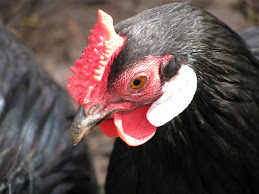.jpg)
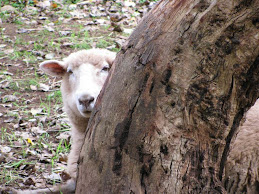.jpg)
.jpg)
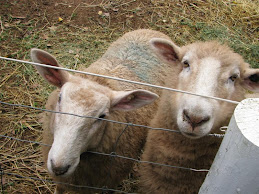.jpg)
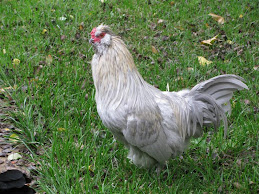.jpg)